Lord Muruga, Skandha or Kartikeya, is a strikingly handsome, intelligent Deity associated with war. He is a brave warrior against injustice. Unlike his chubby brother Ganesha, Muruga has a serene, striking face that exudes radiance and peace. Many parents name their baby boys after Lord Muruga. They wish their children would be as charming and good-looking as their favourite God.
Devotees of Lord Muruga are present across many countries. The Staunch devotees are significantly present in great numbers, especially in places of Tamil influence. The poets and poetesses have produced many literary works in Tamil praising Lord Muruga. The poet and Saint Arunagirinathar sang hymns on Muruga, and his work is well-liked. His work includes “ Thiruppugzhal, Kandar Alankaram, Kandar Anuboothi. His work is known for having rhyming lyrics and is loved and revered as much as the Thevaram hymns ( Sung on Lord Shiva). Poet Nakkirar wrote the Thirumurukatruppadai during the Sangam period. Kandha Sashti Kavacham is a devotional song written by Devaraya Swamigal. It is a beautiful piece and can be sung daily for protection. Kandha Puranam is also a great epic in Tamil literature. It describes the victory of Muruga over the Asura Surapadman.
In Tamil literature, there are five types of land classifications. They are Kurinji (mountainous regions ), Mullai (forest regions), Marutham (agricultural lands), Neithal (coastal areas) and Paalai (desert). Lord Muruga is the God of the Kurinji region (mountainous areas). Hence, he is also called Kurinji Andavar. His temples are located mainly on hills. The most famous temples on Lord Muruga are 6 in number and are called “ Arupadai Veedu” or “ Six Abodes of Lord Muruga”.
THE SIX ABODES OF LORD MURUGA / ARUPADAI VEEDU
1. THIRUPARANKUNDRAM
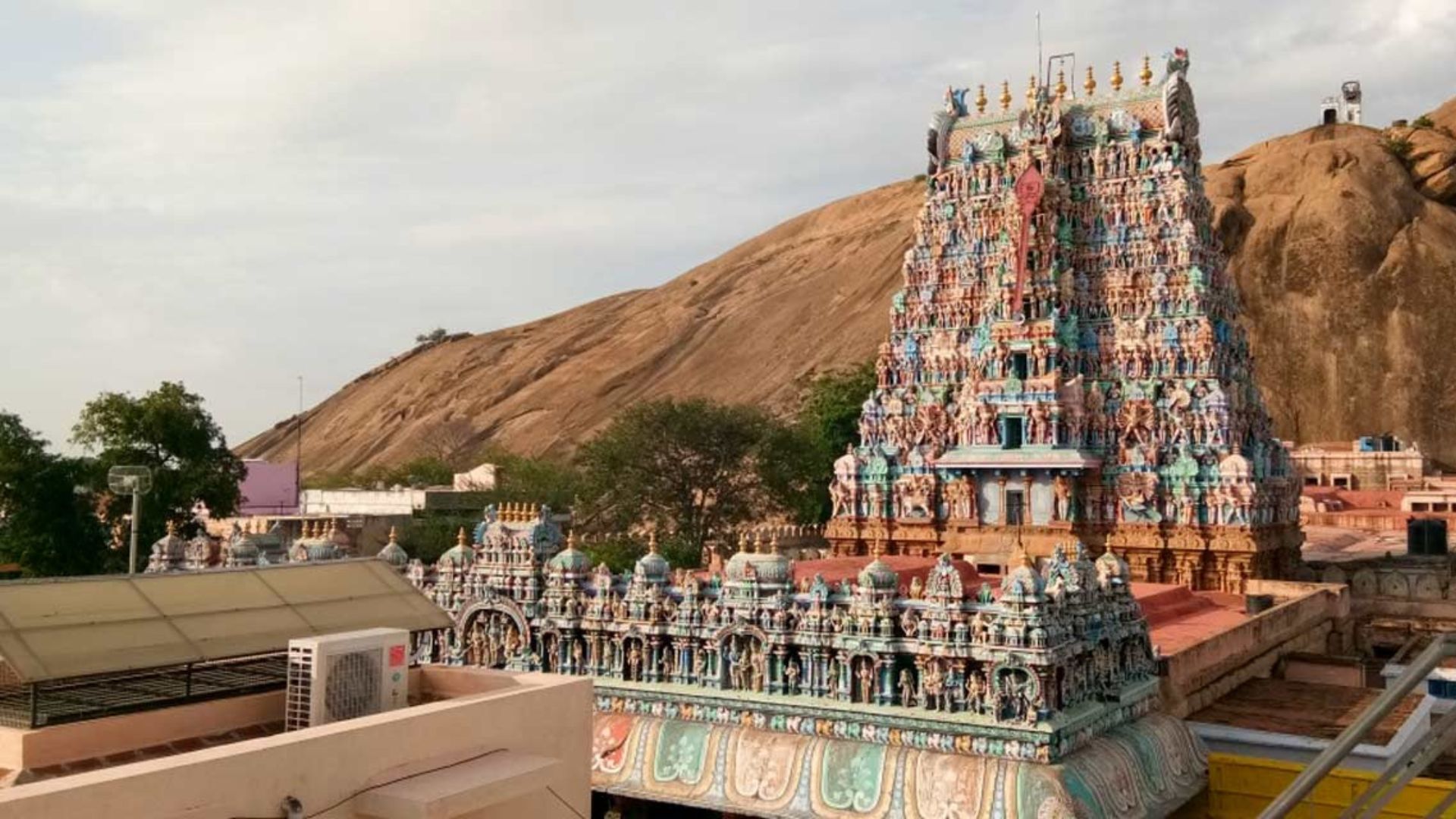
Arulmigu Subramaniya Swamy Temple of Thiruparankundram is on the outskirts of Madurai. It is a cave temple built by the Pandya Kings. This temple has many beautiful sculptures of Lord Shiva, Goddess Parvati, Ganesha and other Gods and Goddesses. The Saint Machamuni is associated with this temple as he practised Vasi Yogam and attained Jeeva Samadhi here.
The Sthala Purana of this temple says that after Soorapadman undertook tapasya, Lord Shiva granted him a boon of invincibility. The Asura became powerful and arrogant. He tormented everyone who would resist him and even captured the king of the Devas - Lord Indra. Finally, the Devas appealed to lord Shiva to protect them.
Lord Muruga was born and slayed the wicked Soorapadman. The day when Lord Muruga slayed Soorapadman is celebrated as Skanda Sashti festival. Lord Indra was delighted and enchanted with the handsome Young warrior. He offered his daughter to be married to him. The marriage between Lord Muruga and Deivanai took place in Thiruparankundram. The Devotees can see Lord Muruga with his senior consort - Deivanai. In all the other abodes, both his consorts accompany him. This Sthala is a preferred place of marriage. The devotees believe that when couples marry here, they lead a happy married life and get blessings from their Lord.
2. THIRUCHENDUR
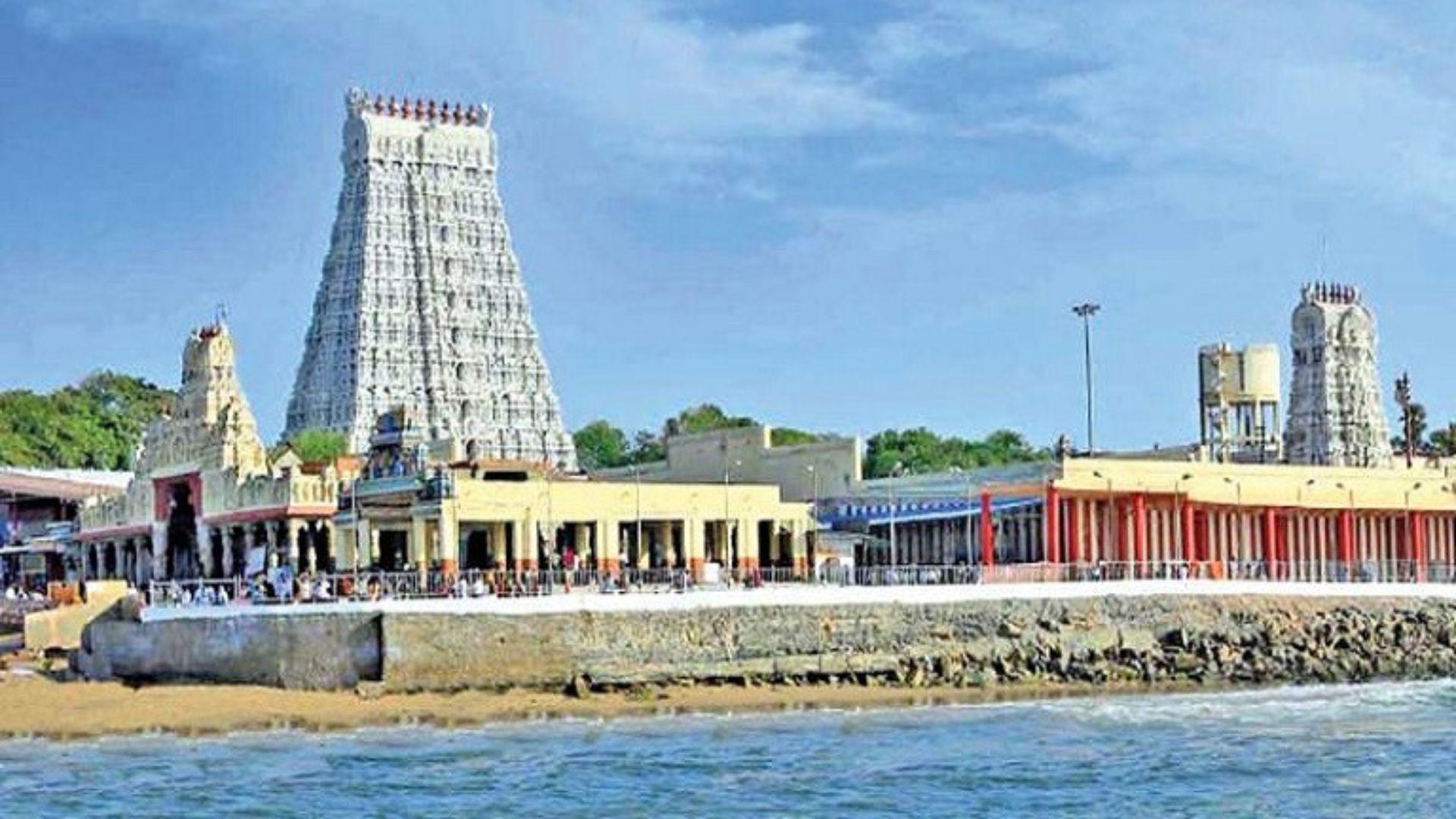
Thiruchendur is a small coastal town located in the Thoothukudi district of Tamil Nadu. It is one of the Six abodes and home to Lord Muruga. Here, Lord Muruga is known as Senthil Nathar. The temple complex is called Arulmigu Subramaniya Swamy temple. The speciality of the temple lies in its location. While most temples are atop hillocks, this is close to the seashore.
The Sthala Purana of this temple says that Lord Muruga stayed with his army before battling with Soorapadman. Lord Muruga felt remorse after killing Soorapadman and his army. He wanted to build a shrine for his father, Lord Shiva and worship him. Hence, the temple came into existence. The divine architect constructed this temple. This temple is widely known and visited by the Muruga devotees. It is famous for the Soorasamharam - a part of the Skanda Shasthi Vratham. Devotees observe Vratham for six days, and Soorasamharam is the last day. The devotees believe that Muruga defeated Soorapadman on the final day. Various artists gather here during Soorasamharam and enact the whole story of Lord Muruga and Soorapadman. It is a grand annual event.
Some other stories and miracles happened at this divine temple. A long time ago, the Dutch had settled in parts of Thiruchendur and started looting the place. They even stole the Idol of Muruga, thinking it was a Gold statue. A fierce storm blew up as the Dutch sailed some distance.
The sailors were scared and believed they faced a storm due to the stolen statue. The men dropped the stolen statue of Muruga in the sea, and at that very moment, the storm calmed down, and the Dutch sailed away safely. It so happened that Lord Muruga urged a priest living in that area to find the discarded statue in the sea by appearing in the priest’s dream. In the dreams, Muruga told the priest that there would be three kites ( Vahana of Lord Vishnu ) circling above the sunk statue. There would also be a floating lemon in the sea. After repeatedly having Muruga in his dreams, the priest took help from divers and located the stolen statue. This stolen Idol was later re-installed in the temple.
3. PALANI
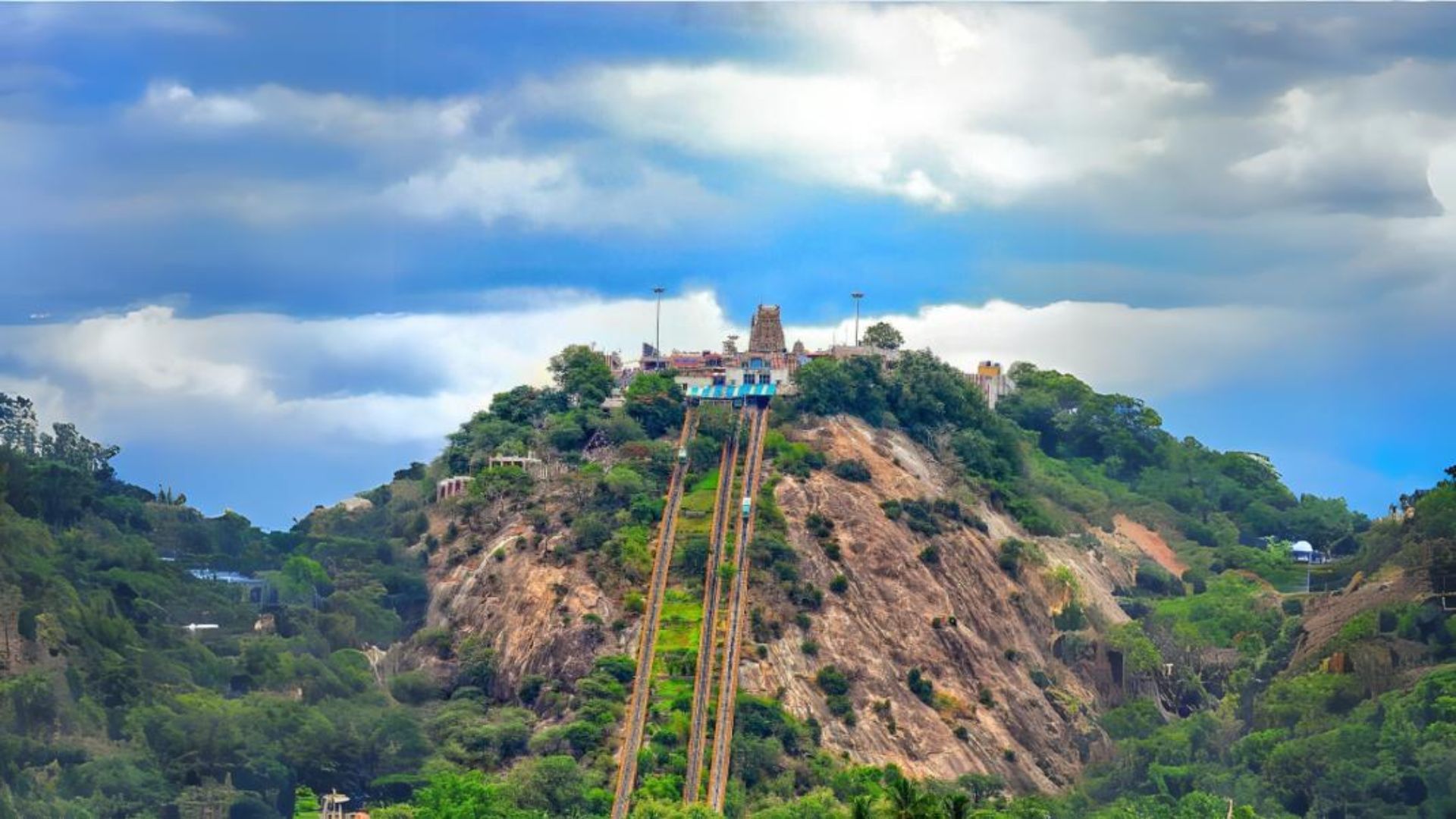
Palani is a small city in the Dindigul district. It is the third Abode of the Lord, and he is Lord Dhandayuthapani Swamy. He holds a staff or a baton ( Dhandam in Tamil language), hence the name Swamy Dhandayuthapani. The Idol of the Lord is unique. It was conceived and consecrated by a powerful Siddhar called Bhogar. He combined nine poisonous substances ( called Navapashanam) and consecrated the Idol of Lord Muruga. The Panchamirtham is a very famous Prasad from this temple.
The Sthala Purana says that Sage Narada possessed a divine fruit. He took it to Kailash ( the Abode where Lord Shiva lived). He presented it to Lord Shiva and asked him to eat the fruit of wisdom. Lord Shiva could not devour it all by himself. He offered it to Goddess Parvathi, who promptly wanted to divide the fruit into two halves and give it to her sons ( Lord Ganesha and Lord Muruga). Sage Narada stopped her and asked it not to be divided. He announced a competition between the sons. Whoever circumvents the world first will get the divine fruit.
Lord Muruga and Lord Ganesha agreed and immediately sprang into action. Lord Muruga mounted his peacock to circle the earth. Lord Ganesha mounted his Mouse and circled his parents as he considered them his world. Lord Ganesha got the divine fruit of wisdom. Lord Muruga came back and found his brother devouring the fruit. Angered by this, he mounted his faithful peacock, flew to Palani and settled there. Goddess Parvathi pacified Lord Muruga and told him - Pazham Nee, Meaning - you are the divine fruit. Thus, the place got its name - Palani.
4. SWAMIMALAI
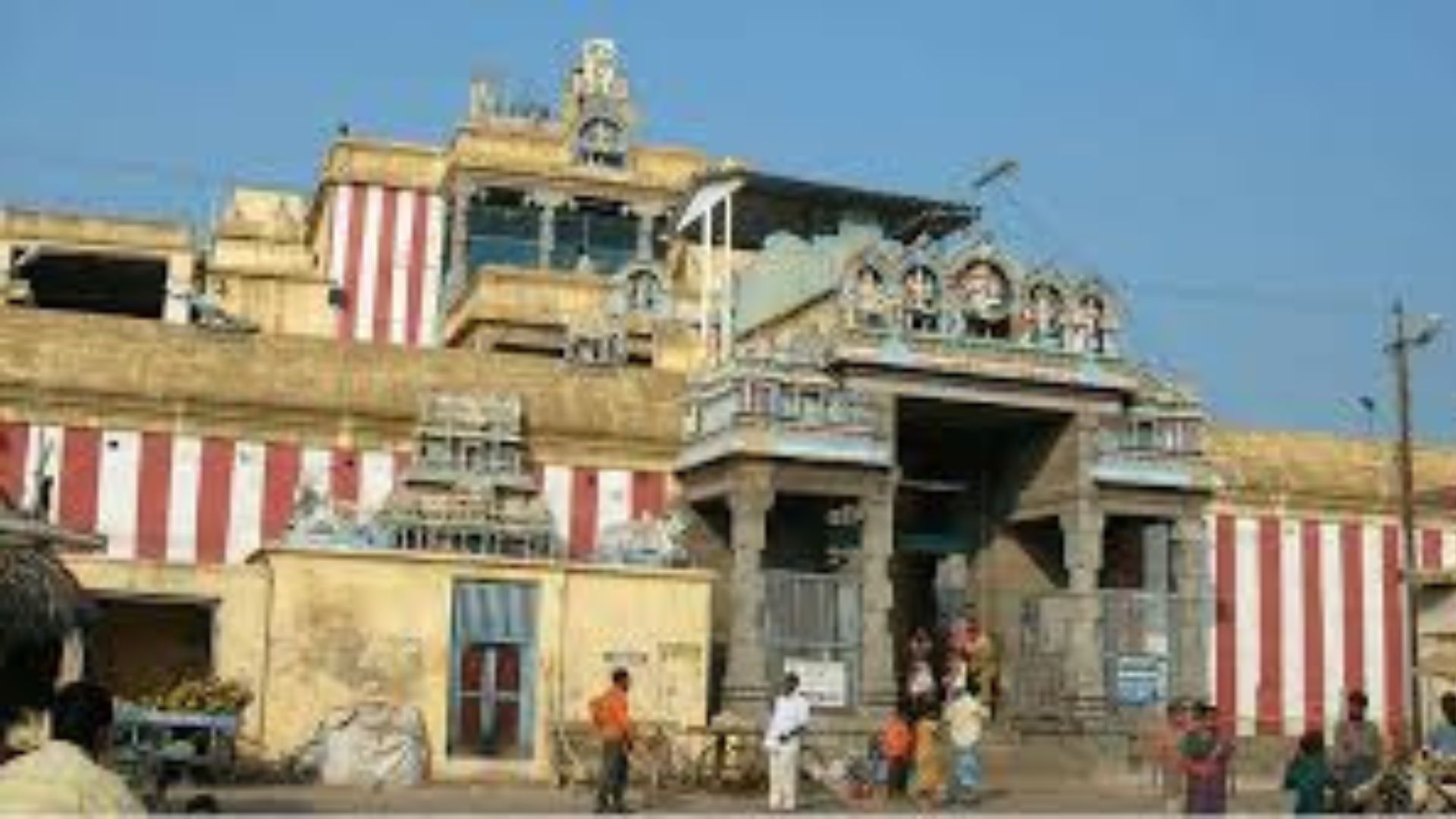
Swamimalai is a serene town in Kumbakonam. It lies on the banks of the river Cauvery. Here, Lord Muruga appeared as Swaminatha Swamy. The temple is atop a small hillock. The climb to the top of the temple is easy as there are only sixty stairs. Each of these sixty stairs represents each Tamil Year ( from the ancient Tamil Calendar). This temple is one of the most visited among the Kumbakonam temples. Thursdays are special here, as Lord Muruga is with his diamond Vel.
The Sthla Puruna of this temple says that lord Muruga expounded the meaning of OM - the Pranava Mantra to his father, Lord Shiva.
One day, Lord Brahma visited Mount Kailash and paid his respects to Lord Shiva. He failed to acknowledge the playful and young Lord Muruga. Hence, Lord Muruga stopped Lord Brahma and enquired who he was. Lord Brahma was overcome with ego and said that he was the creator of this world. Lord Muruga further questioned the source of his creative powers, to which Lord Brahma replied that his mastery of the Vedas helped him. Lord Muruga further prodded Lord Brahma to explain OM - the Pranava Mantra / Primodal Sound. Lord Brahma was taken aback and faltered in giving a clear explanation. Lord Muruga imprisoned Lord Brahma. The creation process came to a standstill, and the world was chaotic.
Lord Shiva asked his son to free Lord Brahma to put the world in order. Lord Muruga refused and asked his father for an explanation of OM. Lord Shiva was also taken aback and asked his son for the answer. Thus, Lord Muruga became a Guru to his father and explained the meaning of OM. Thus earning the name Swaminatha, the guru of Lord Shiva. The Shrines of Lord Shiva and Goddess Parvathi are located at the base of Swamimalai hill, while the shrine of Lord Muruga is at the top.
5. THIRUTTANI
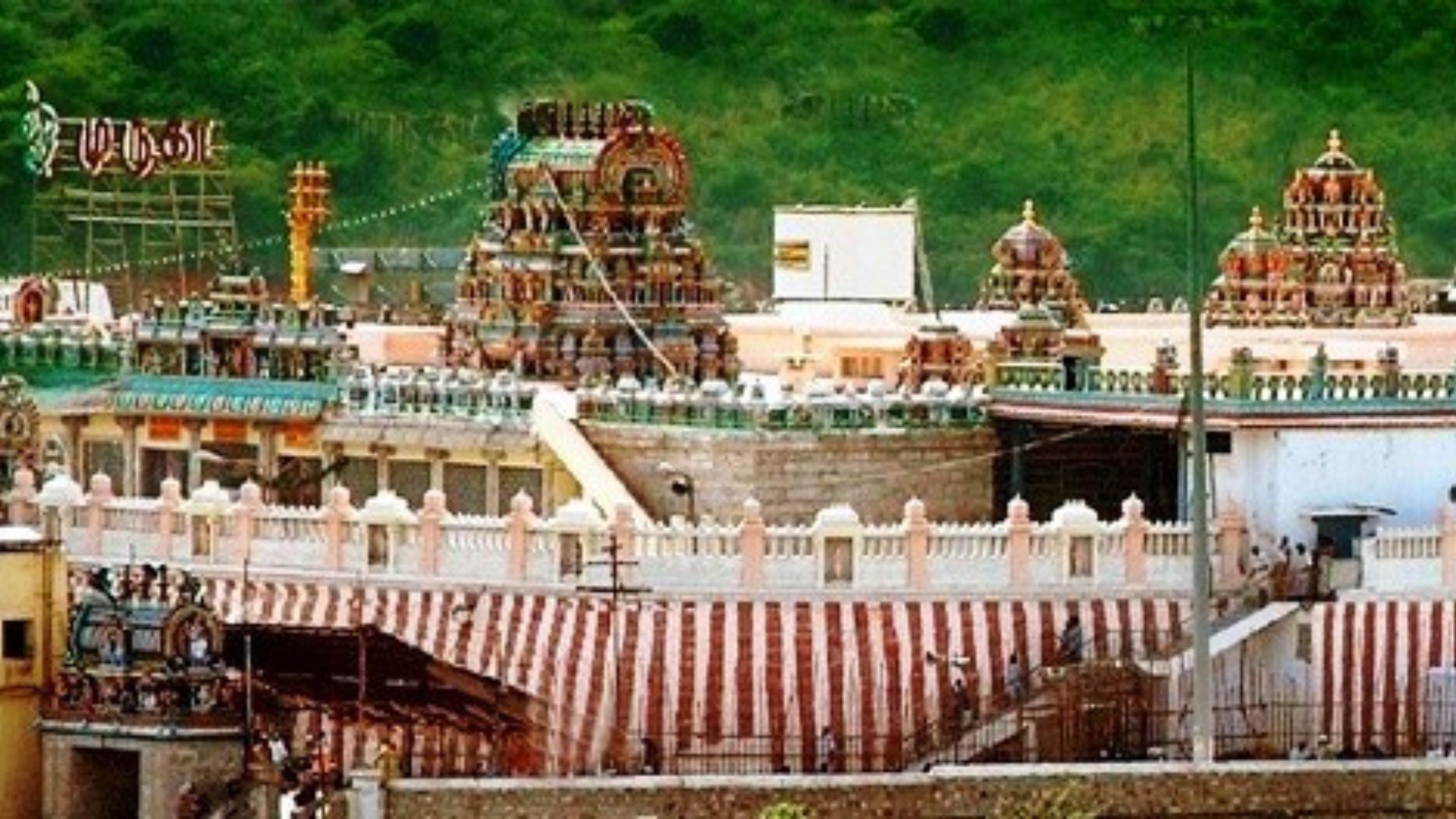
Thiruttani lies in the Thiruvalluvar district, about 80 km from Chennai. It is the fifth Abode of the Lord, and Muruga is worshipped here as Arulmigu Subramaniya Swamy. Lord Muruga waged a war against the Asuras and lost his peace of mind. He rested atop this hill and regained his inner peace. The hillock at Thiruttani is called Tanigaimalai, which means peaceful hill. The temple tank is called Saravana Poigai and is at the bottom of the hillock. The temple tank holds sacred water, which heals many bodily ailments. After a dip in this tank, the devotee usually climbs the 365 steps, each representing a day of the year. It is said that the divine snake Vasuki, had wounds all over the body after the churning of the milky ocean. The snake got his wounds healed after worshiping Lord Muruga in this temple.
The Sthala Purana of this temple says that the wedding of Lord Muruga and his consort Valli took place here.
A baby girl was found amidst some plants by the Kuravas ( Gypsy tribe community). The head of the Gypsy tribe did not have a child and decided to raise this baby girl as his. He named her Valli, inspired by the plants growing near where she was found. Valli grew up to be a beautiful young girl. She was full of devotion towards Lord Muruga. She grew up to be a watcher woman and shooed away the birds in the fields. One day, an aged man (Lord Muruga in disguise) saved Valli from a wild elephant. Valli thanked him for saving her life but was shocked when the Aged man asked her to marry her. She refused, stating that she would marry only her beloved Lord Muruga. Finally, Lord Muruga revealed himself to Valli, and they married in Thiruttani.
6. PAZHAMUDIRCHOLAI
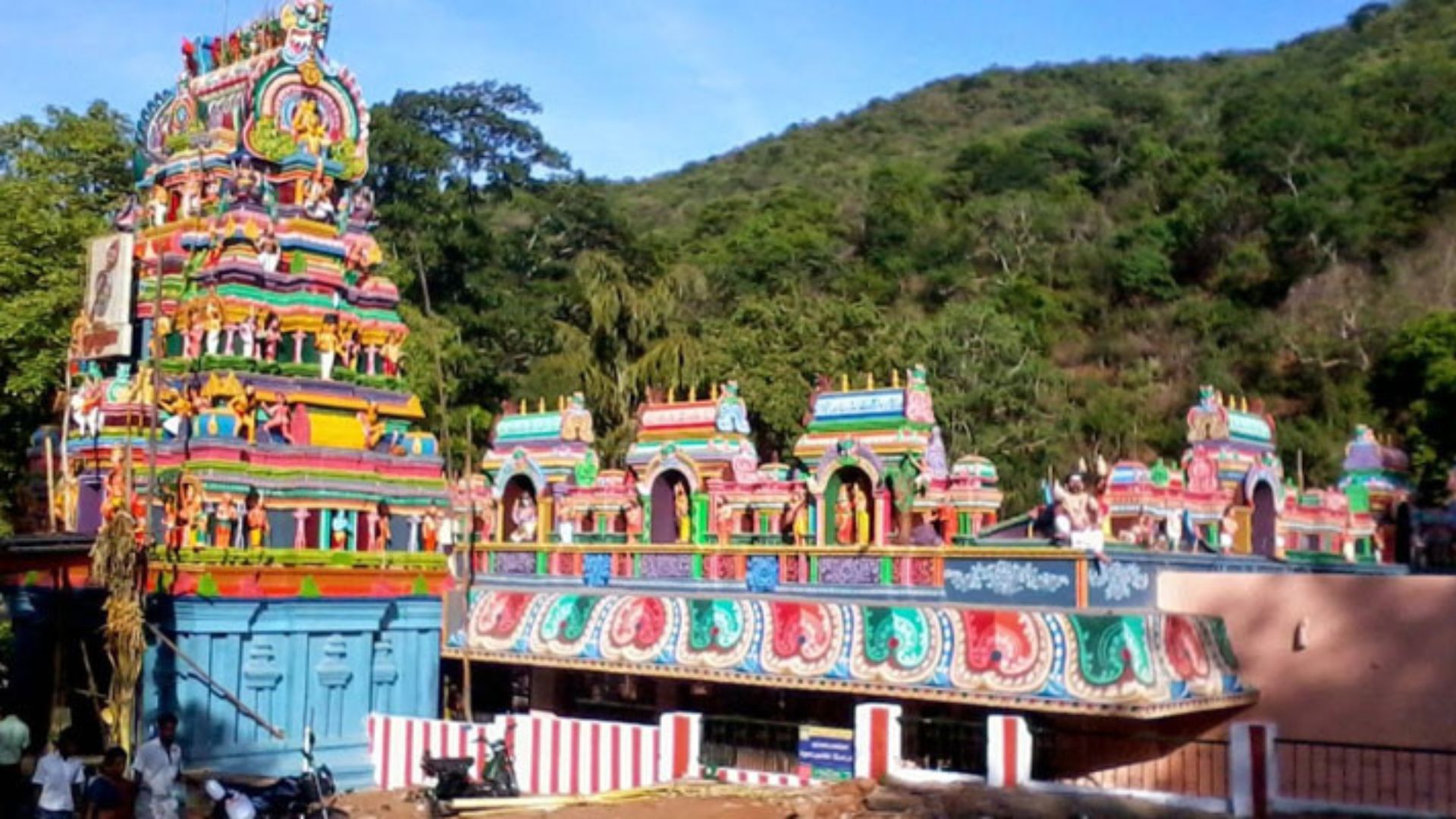
This temple lies about 25 km from Madurai and only 2 km from the Azhagar Kovil ( another famous temple of Madurai). The temple is also called Solaimalai Murugan Temple after the beautiful lush greenery surrounding it. Here, Lord Muruga gives darshan with his two divine consorts - Deivanai and Valli.
The Sthala Purana of this temple says that Lord Muruga tested Avvaiyar - a great Tamil Poet under a tree. The devotees who come to this temple still worship the Jamun tree.
Avvaiyar travelled in the hot sun and briefly rested under a fruit-bearing tree. She was hungry and thirsty after her travel. Lord Muruga disguised himself like a young boy and approached the tired Avvaiyar. He enquired if she wanted cooked or uncooked fruit from the tree. Avvaiyar was well-versed in literature, but she was confused with this question. However, she replied that she preferred fresh, raw (uncooked) fruits from the tree. The young boy climbed the tree, plucked the Naval (Jamun) fruit, and threw it down. Avvaiyar picked up the fruits and blew the dust and sand off it before consuming them. The young boy smiled at Avvaiyar and wondered if she was cooling the cooked fruit by blowing on it. Avviayar was taken aback. She did not expect the boy to be sharp-witted. It was not normal for a shepherd boy to have such intellect. She enquired who he was. After much pleading, Lord Muruga appeared before her and blessed her.
Presently, abundant flora and fauna that are indigenous to the area encompass this temple. There is a natural spring where the devotees take a dip and refresh themselves.
Thus, these powerful temples of Lord Muruga have their significance. The Sthala Purana of each temple plays a vital role in retelling the story of Lord Muruga. Over time, many saints and poets have visited these Abodes and sung praise of the Lord. Both Nakeerar and Arunagirinathar elaborately mentioned Lord Murugar and the abodes in their literary works. Now, the devotees of Lord Muruga undertake pilgrimages to these important Six Padai Veedu /Abodes of Lord Muruga at least once in their lifetime. They celebrate the many festivities of Lord Muruga, Observe Vratham, sing hymns and songs and immerse themselves in Bhakthi, for it is the way forward in one’s spiritual life.
 Vaishnavi Gurusankar is a passionate educator, a wife and a mother. She has over a decade of experience as an educator and has been closely working with teachers and children of all ages. She is also an active parenting blogger and founder of Magical Unicorn, an exclusive parenting blog founded on Indian ethos, values and stories at its core. She has also authored the book "Bharatyam : Science behind Hindu Practices & Way of Life"
Vaishnavi Gurusankar is a passionate educator, a wife and a mother. She has over a decade of experience as an educator and has been closely working with teachers and children of all ages. She is also an active parenting blogger and founder of Magical Unicorn, an exclusive parenting blog founded on Indian ethos, values and stories at its core. She has also authored the book "Bharatyam : Science behind Hindu Practices & Way of Life"
NEXT ARTICLE
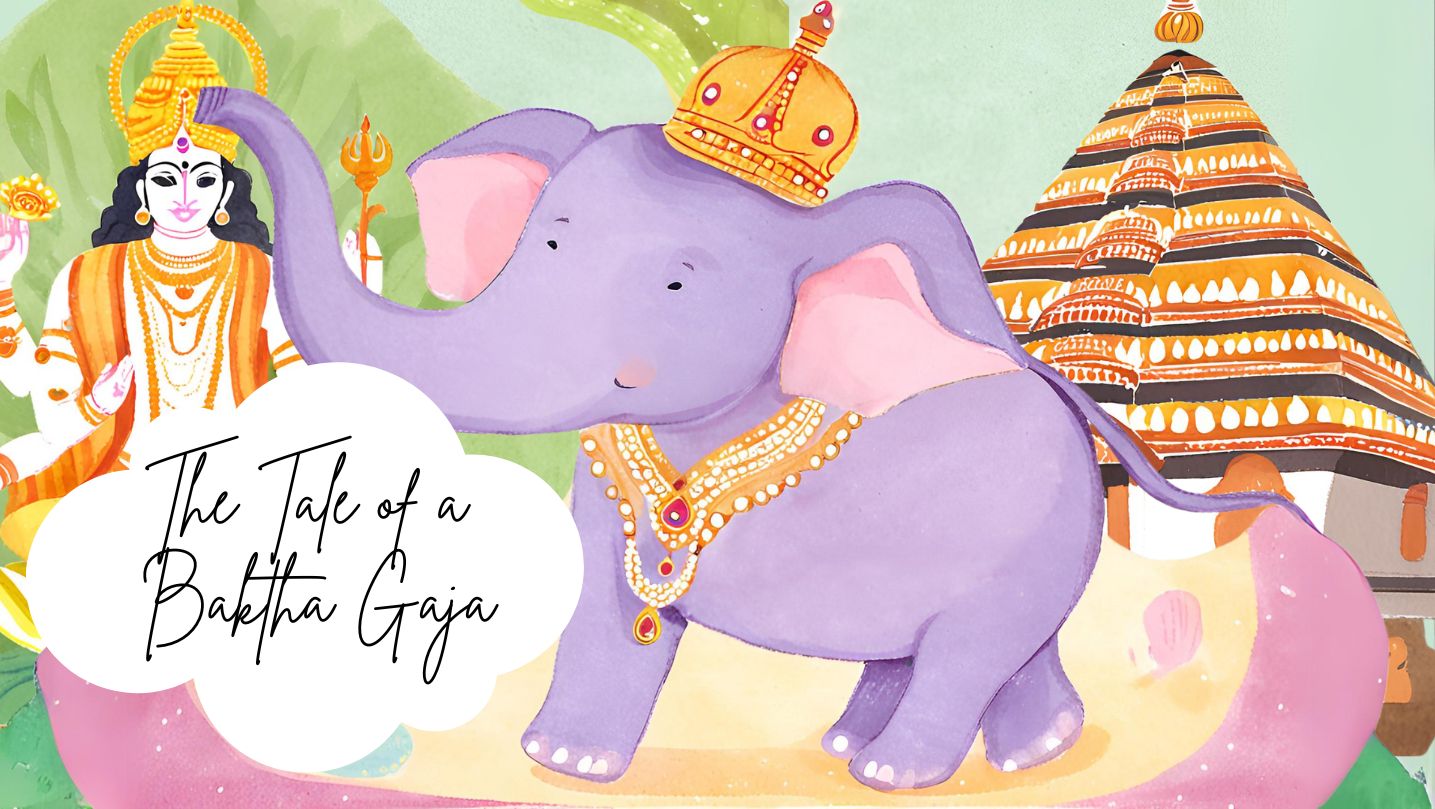
In the lush, green heart of Kerala lived an elephant who became a living legend - a tale of an elephant turned into a bakth. His name was Keshavan, bu...
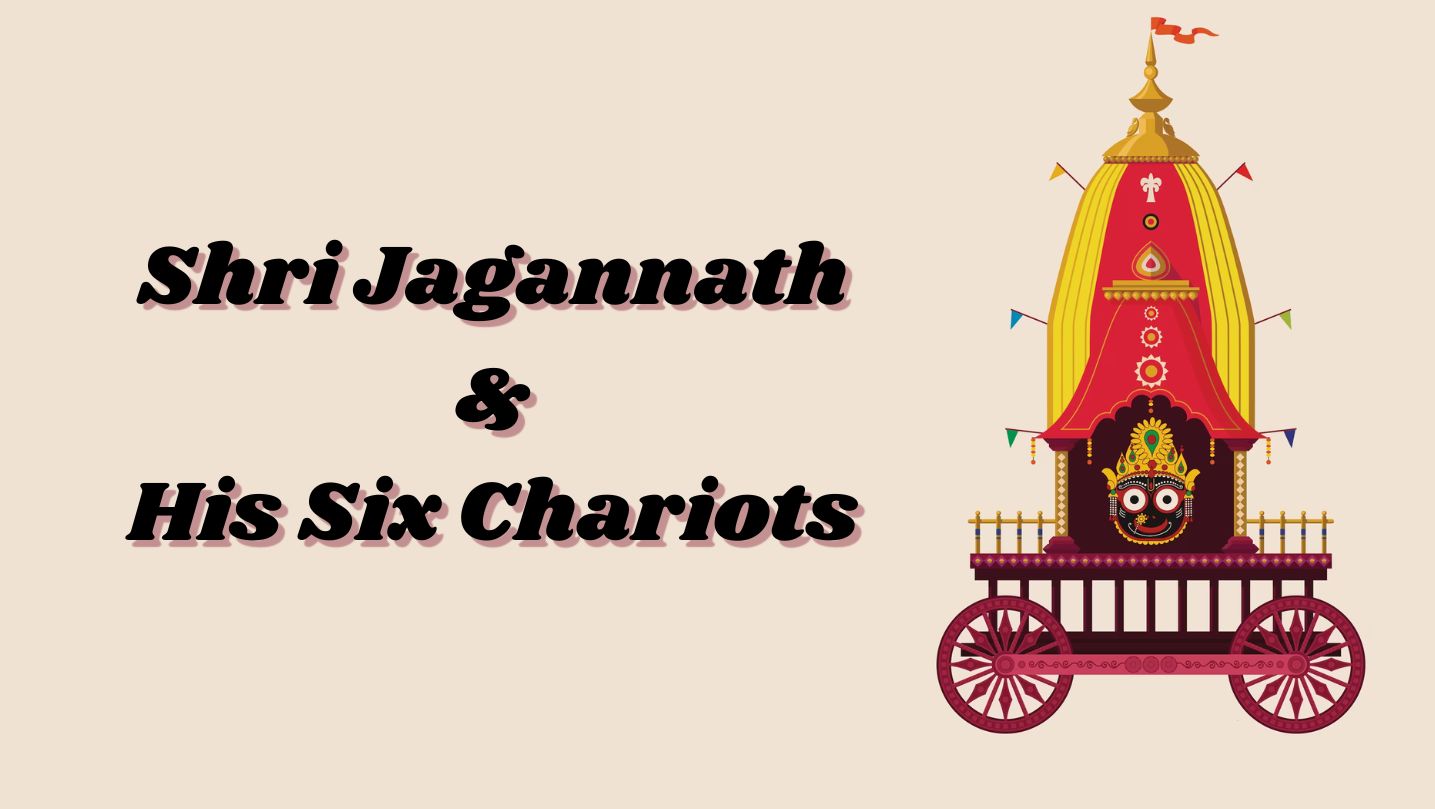
The Chaitanya Charitamrita by Shri Krishna Das Kaviraj provides a vivid description of the operations management of Shri Gundicha Yatra during the tim...
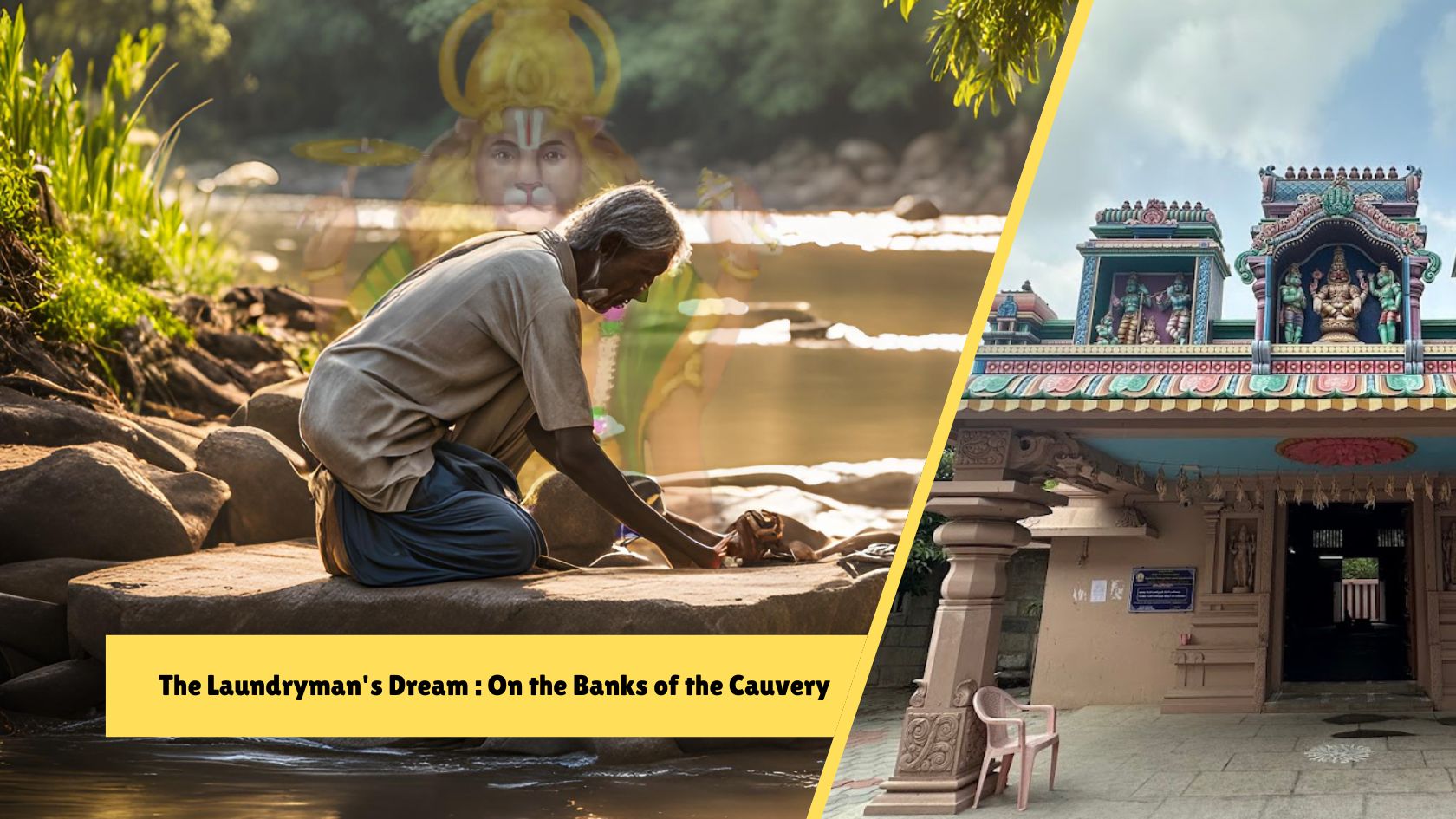
The sun beat down on my back as we stepped out of the car, the air thick with the humidity of rural Tamil Nadu. Chinthalavadi, a small village nestled...